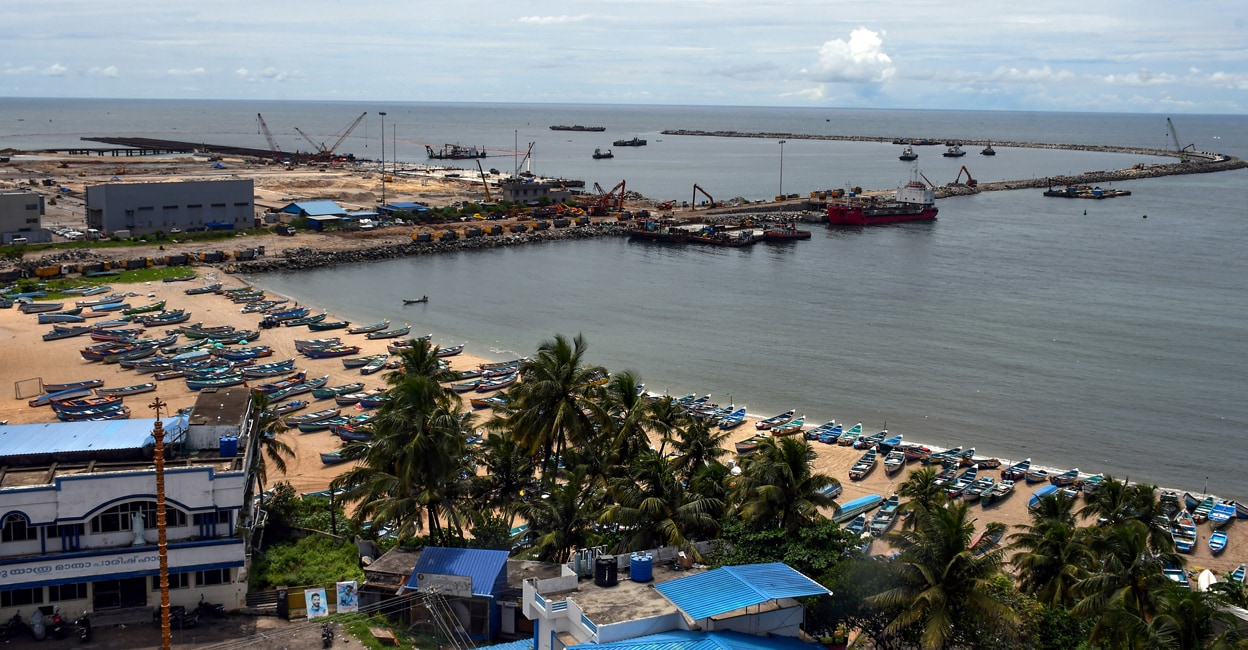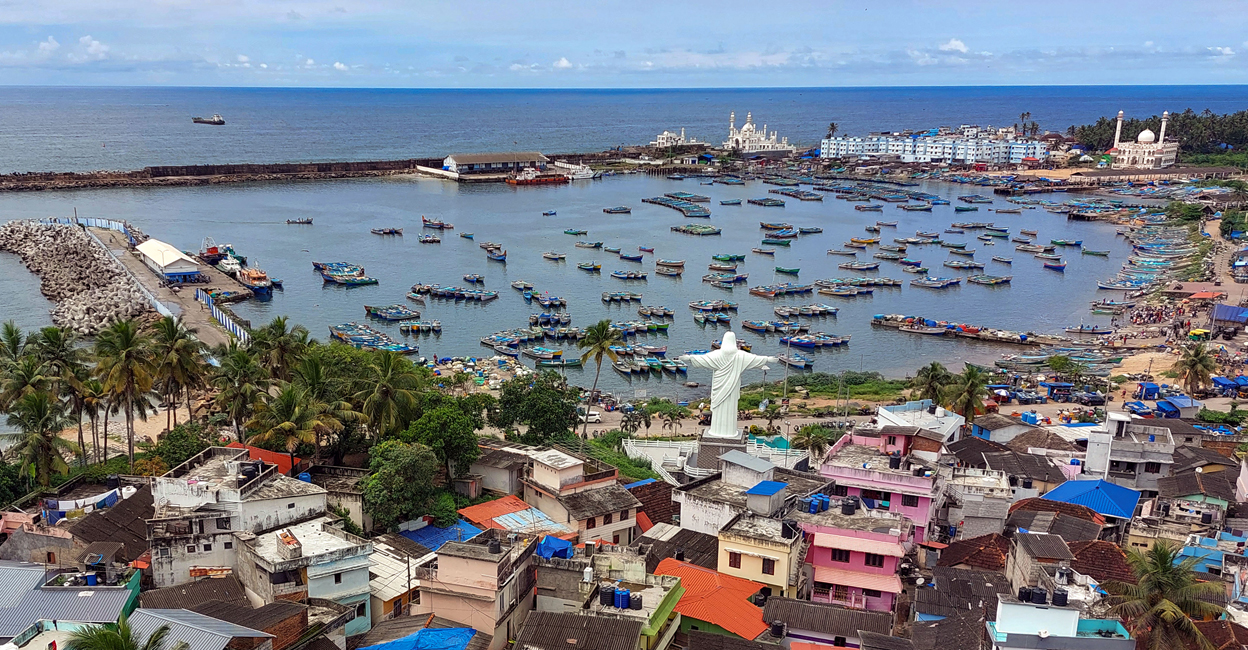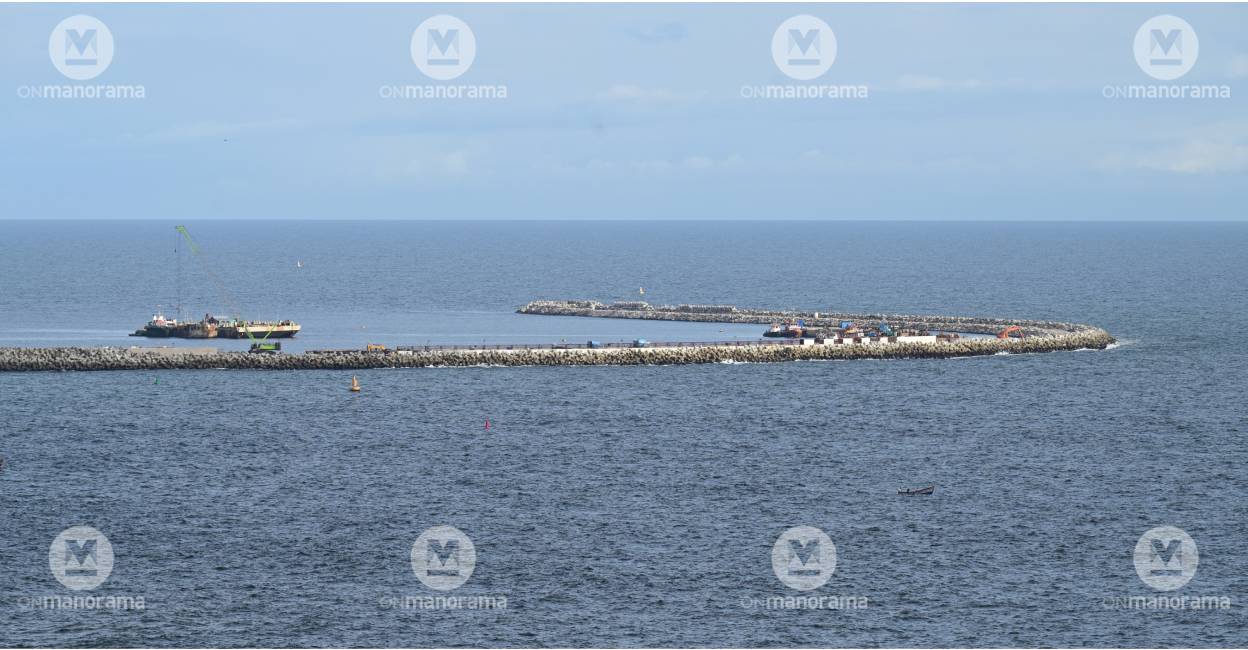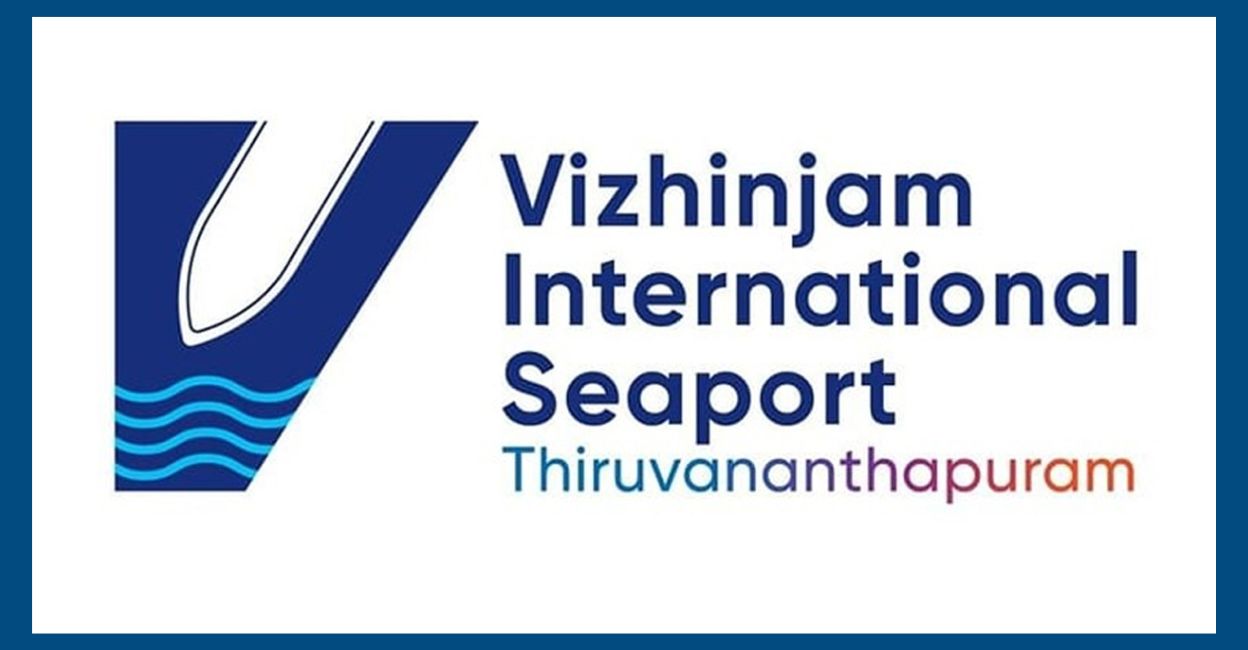Dream project comes true at Vizhinjam

Mail This Article
Thiruvananthapuram: After the terminal at Vallarpadam in Kochi bagged the distinction of being India's first Transhipment Container Terminal, Kerala claimed another first as the heavy load carrier, Zhen Hua 15, docked at the Vizhinjam International Transhipment Deepwater Multipurpose Seaport in Thiruvananthapuram on Thursday.
The Hong Kong-flagged vessel that had set sail from a port in Shanghai, China, became the first vessel to dock at Vizhijam Seaport, India's deepest harbour when it brought in three cranes. The docking of the project vessel also proclaimed that Vizhijam could receive any mothership, a large vessel from which smaller craft/feeder vessels are launched.
The anchoring of Zhen Hua 15 became more important since it declared that Vizhinjam had the depth and width to receive large container ships.
The Vizhinjam Seaport project is the major link that connects Kerala with the country's ocean economy. Currently, 60 per cent of cargo vessels in the world are motherships with deep draught (draft) - the vertical distance between the waterline and the bottom of the hull - requiring deeper ports to sail in and drop anchor.
The port at Vizhinjam is 20-metre deep. India has two more ports that could accommodate motherships: Mundra in Gujarat and Visakhapatnam in Andhra Pradesh.

Currently, sixty per cent of the cargo at the port in Colombo, Sri Lanka, is meant for India. It has been estimated that half of the volume will be transferred to Vizhinjam seaport in its first phase.
Capacity: 10 lakh TEU
The seaport to be commissioned in May will achieve the capability of handling 10 lakh TEU - or Twenty-Foot Equivalent Unit by December.
In layman's terms, it means the port could handle about 1.5 crore tonnes of cargo in 10 lakh containers a year. Still, Vizhijam will not be number one in the country in handling capacity.
Kochi and Thoothukudi ports have the capacity to handle 15 lakh TEU of cargo, while Mumbai handles 50 lakh TEU.
Advantage Kerala
The seaport's technological development will benefit the Adani Group, which will have the right to operate it for 60 years.
However, the state could also benefit if it taps the possibilities the port would open up. Direct employment and revenue through taxes would be natural, and a Port City is likely to come up around the harbour. Additionally, the state will benefit from the crew members and tourists reaching Vizhinjam.
Deliberate attempts, however, are required to make giant strides in development. The first is to develop basic infrastructure. Besides developing road and rail connectivity for freight movement, the state should also utilise the facilities of the airport located close by.

Once the seaport is fully operational, new employment, commercial, and industrial zones will develop in the area. The export and import facility will boost the manufacturing sector. If Kerala could develop its smaller ports to accommodate feeder vessels, it could reap huge benefits from the Vizhinjam seaport.
Proximity to shipping route
Vizhinjam has a peculiar advantage. It is located just 18 kilometres from the international east-west shipping route, connecting Western Asia, Europe, Africa, and the far eastern areas of the world, whereas Colombo, is 50 kilometres away.
In short, Vizhinjam has the potential to not only receive container ships to India but also motherships ferrying containers to other countries that are now dependent on Colombo.
Foreseeing this possibility, the Adani Group has set the process for the final phase of construction activities rolling even before completing the initial phase. The Adani Group will kick-start the next Rs 9,700-crore phase before completing the Rs 7,700-crore first phase.
Vizhinjam also has the honour of being the country's first automated port.
Deepest in India
Thiruvananthapuram: The Jawaharlal Nehru Port (Nhava Sheva) in Mumbai is one of the biggest ports in India. It has a depth of 14 metres, a shade deeper than Kochi's 13.8 metres.
The Vizhinjam seaport has a unique depth of 20 metres. The depth allows ships as long as 400 metres and with a draught of 16 metres to berth at the port. Vizhinjam is the only port in the country which could accommodate such huge vessels, making it the deepest container transhipment port in India.
Vizhinjam and Vallarpadam
Zhen Hua 15 sailed into Vizhinjam to deliver ship-to-port cranes (often known as quay cranes) to the port. They are port gantry cranes, used to load or unload (discharge) containers to or from the ship to the shore or berth.
The seaport will receive three more ships ferrying seven cranes before May. The Vallarpadam terminal at Kochi has four ship-to-port cranes.
The three cranes that reached Vizhinjam are the country's largest, which could shift containers for a distance of 72 metres from the shore.
Vizhijam could accommodate ships with a maximum length overall of 320 metres. Being a transhipment, deep-seawater port, it can handle vessels with a length overall of above 400 metres. The Vallarpadam terminal in Kochi cannot accommodate motherships with deep draught.

Hence, motherships now berth at the Colombo port, and the cargo is transferred from them to smaller feeder vessels which take them to other countries. Once Vizhinjam becomes operational in May, motherships can avoid sailing to Colombo.
In India, Vizhinjam is the closest — approximately 18 kilometres — to the international shipping route. Kollam is 33 kilometres and Kochi is 130 kilometres from the sea route, while ships have to sail 50 kilometres from the international route to reach Colombo.
The Vizhinjam seaport is being developed at a total cost of Rs 7,700 crore. Of the total expenditure, Kerala is spending Rs 4,600 crore while the central government is pumping in Rs 860 crore. The Adani Vizhinjam Port Private Limited Group will spend the remaining Rs 2,240 crore.
The agreement with the Adani Group is for 40 years, extendable to 20 more years.
Racing against time: Miles to go
Thiruvananthapuram: The Adani Group was to complete the first phase of the Vizhinjam Seaport on December 3, 2019. However, the government received the first ship at Vizhinjam even as the arbitration process has been on for breach of contract.
Though the firm has been asserting that the first phase would be completed by May, several works are still pending. The required length of the berth is 800 metres, up from the present 274 metres.
The breakwater to protect the harbour from waves should be 2.97 kilometres long. Only 2.39 kilometres have been completed.

Of the planned 13 buildings, only five have been completed. A 1.1-kilometre stretch of the total 1.7-kilometre road linking the port with the highway is also pending.
Financial hurdle
The state government's share in the Rs 7,700 crore project is Rs 4,600 crore. However, the state has so far provided only Rs 460 crore.
The responsibility to provide the entire Rs 1,350 crore for constructing the breakwater is with the government. Only the first instalment has been provided. Though the government tried to raise loans, its efforts have so far gone in vain.
The construction of a railway line for freight movement needs Rs 1,200 crore. The viability gap fund from the Centre, too, has not yet been received.
Rehabilitation package on paper
The UDF government announced a rehabilitation package of Rs 474.5 crore in 2015 for fishermen who would lose their livelihood and ecosystem due to the port project.
Even as Vizhinjam received its first ship eight years after the announcement of the package, the government has so far spent only Rs 100 crore for rehabilitating the fishermen. The package announced included compensation for sea surges and coastal depletion.
The government's promise was to earmark Rs 350 crore for land acquisition and construction of houses, Rs 59 crore for alternative livelihood, Rs 39 crore for empowering women, Rs 24 crore for education, and Rs 2.5 crore for geriatric care.
The government appointed a committee to study the coastal depletion, following allegations that the construction of the port had led to large-scale erosion of the beach. The committee, however, has not completed the study even after one year.

